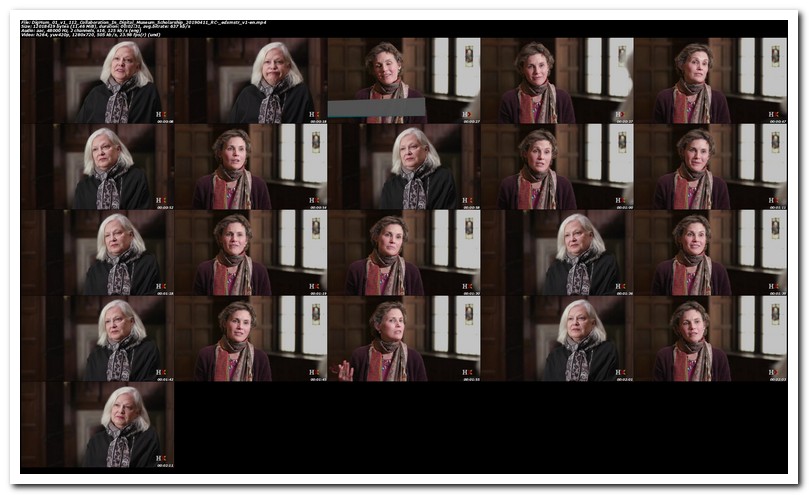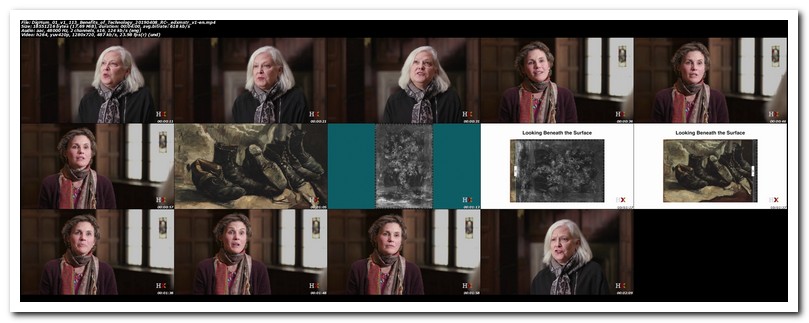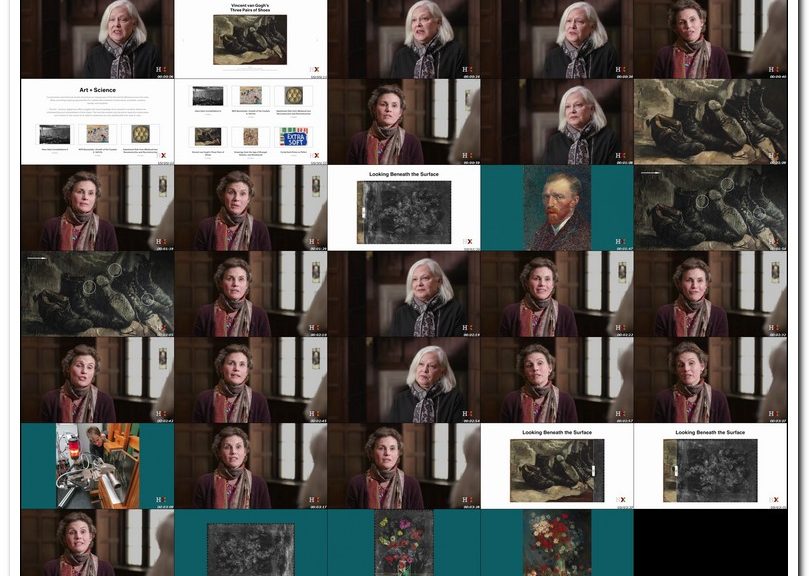I am back to the “Introduction to Digital Humanities” course @edx.org.
Today, I learned about “Building and Using Collections” (lesson 1.3).
I consumed the following lessons:
- Van Gogh’s Three Pairs of Shoes
- Collaboration in Digital Museum Scholarship
- Benefits of Technology in Museum Scholarship
- Digital Access and Museum Curatorial Practice
- New Approaches to Museum Scholarship
- Harvard Art Museum and Open Access
At some stage, the student is asked to “recall the way in which Jeffrey Schnapp described two categories of digital humanities projects: those that identify and study large scale trends and those that focus on smaller, specific examples or exceptions. How does his perspective relate to Martha Tedeschi’s study of James McNeill Whistler or Francesca Bewer’s study of Van Gogh’s painting Three Pairs of Shoes?”
My answer follows.
Title:
I see Tedeschi’s study as a “specific example”, and Bewer’s as identifying a “large” scale trend
Body:
Martha Tedeschi’s study of the James Whistler letters, was done on location, at the University of Glasgow, before the letters were digitized and made available online. It is reasonable to assume that her research required an increased relative focus, more time and money, and it did not nurture as many opportunities for comparisons and other forms of bridging to other works, as current conditions potentially allow. Her research conditions absorbed the object of study itself, and its content, but also its tangibility and even properties not yet digitized (such as weight, feel, smell, etc.). In other words: Tedeschi’s study is intensely focused on the Whistler letters, which I consider to fit Schnapp’s “smaller examples or exceptions” category, more than it can fit the “large scale trends” classification.
These days, with many more collections available online and technology assisting in time and costs cutting, maybe with existing or with custom software tools, researchers can find the opportunity to leverage or complement their findings from any particular case study with chapter(s) framing their main object in “alternative perspectives”.
Regarding Bewer’s study of Van Gogh’s “Three Pair of Shoes”, the same argument of fitting Schnapp’s “specific” category could be made, but in this case, the usage of several technologies (X-ray fluorescence analysis, X-radiography, spot analysis, etc.) which when applied to other Van Gogh’s paintings, highlight evidence of a larger scale pattern (materials reutilization) in Van Gogh’s art, and the way such techniques can be used to study any other creators’ creations, makes it closer to a digital humanities project with contributes to the identification of “large scale trends”, with “large” being the more subjective word here.
I published my answer as a new post at the following URL: https://courses.edx.org/courses/course-v1:HarvardX+DigHum_01+1T2019/discussion/forum/19ca7036f6396a5f53af59c9a65c8d6169564b93/threads/5d84e0a584452a07b1002914





Technical Details
- ./ups/02_DigHum_01_v1_112_Collaboration_In_Digital_Museum_Scholarship_20190411_RC-_edxmstr_v1-en_768.jpg
- attachment_id : 648
- date_created_gmt : 2019-09-21 18:29:29
- parent : 0
- link : https://arturmarques.com/wp/wp-content/uploads/2019/09/02_DigHum_01_v1_112_Collaboration_In_Digital_Museum_Scholarship_20190411_RC-_edxmstr_v1-en_768.jpg
- title : 02_DigHum_01_v1_112_Collaboration_In_Digital_Museum_Scholarship_20190411_RC-_edxmstr_v1-en_768.jpg
- caption :
- description :
- metadata :
- width : 809
- height : 495
- file : 2019/09/02_DigHum_01_v1_112_Collaboration_In_Digital_Museum_Scholarship_20190411_RC-_edxmstr_v1-en_768.jpg
- sizes :
- thumbnail :
- file : 02_DigHum_01_v1_112_Collaboration_In_Digital_Museum_Scholarship_20190411_RC-_edxmstr_v1-en_768-150×150.jpg
- width : 150
- height : 150
- mime-type : image/jpeg
- medium :
- file : 02_DigHum_01_v1_112_Collaboration_In_Digital_Museum_Scholarship_20190411_RC-_edxmstr_v1-en_768-300×184.jpg
- width : 300
- height : 184
- mime-type : image/jpeg
- medium_large :
- file : 02_DigHum_01_v1_112_Collaboration_In_Digital_Museum_Scholarship_20190411_RC-_edxmstr_v1-en_768-768×470.jpg
- width : 768
- height : 470
- mime-type : image/jpeg
- post-thumbnail :
- file : 02_DigHum_01_v1_112_Collaboration_In_Digital_Museum_Scholarship_20190411_RC-_edxmstr_v1-en_768-672×372.jpg
- width : 672
- height : 372
- mime-type : image/jpeg
- thumbnail :
- image_meta :
- aperture : 0
- credit :
- camera :
- caption :
- created_timestamp : 0
- copyright :
- focal_length : 0
- iso : 0
- shutter_speed : 0
- title :
- orientation : 0
- keywords :
- type : image/jpeg
- thumbnail : https://arturmarques.com/wp/wp-content/uploads/2019/09/02_DigHum_01_v1_112_Collaboration_In_Digital_Museum_Scholarship_20190411_RC-_edxmstr_v1-en_768-150×150.jpg
- id : 648
- file : 02_DigHum_01_v1_112_Collaboration_In_Digital_Museum_Scholarship_20190411_RC-_edxmstr_v1-en_768.jpg
- url : https://arturmarques.com/wp/wp-content/uploads/2019/09/02_DigHum_01_v1_112_Collaboration_In_Digital_Museum_Scholarship_20190411_RC-_edxmstr_v1-en_768.jpg
- ./ups/03_DigHum_01_v1_113_Benefits_of_Technology_20190408_RC-_edxmstr_v1-en_768.jpg
- attachment_id : 649
- date_created_gmt : 2019-09-21 18:29:31
- parent : 0
- link : https://arturmarques.com/wp/wp-content/uploads/2019/09/03_DigHum_01_v1_113_Benefits_of_Technology_20190408_RC-_edxmstr_v1-en_768.jpg
- title : 03_DigHum_01_v1_113_Benefits_of_Technology_20190408_RC-_edxmstr_v1-en_768.jpg
- caption :
- description :
- metadata :
- width : 809
- height : 323
- file : 2019/09/03_DigHum_01_v1_113_Benefits_of_Technology_20190408_RC-_edxmstr_v1-en_768.jpg
- sizes :
- thumbnail :
- file : 03_DigHum_01_v1_113_Benefits_of_Technology_20190408_RC-_edxmstr_v1-en_768-150×150.jpg
- width : 150
- height : 150
- mime-type : image/jpeg
- medium :
- file : 03_DigHum_01_v1_113_Benefits_of_Technology_20190408_RC-_edxmstr_v1-en_768-300×120.jpg
- width : 300
- height : 120
- mime-type : image/jpeg
- medium_large :
- file : 03_DigHum_01_v1_113_Benefits_of_Technology_20190408_RC-_edxmstr_v1-en_768-768×307.jpg
- width : 768
- height : 307
- mime-type : image/jpeg
- post-thumbnail :
- file : 03_DigHum_01_v1_113_Benefits_of_Technology_20190408_RC-_edxmstr_v1-en_768-672×323.jpg
- width : 672
- height : 323
- mime-type : image/jpeg
- thumbnail :
- image_meta :
- aperture : 0
- credit :
- camera :
- caption :
- created_timestamp : 0
- copyright :
- focal_length : 0
- iso : 0
- shutter_speed : 0
- title :
- orientation : 0
- keywords :
- type : image/jpeg
- thumbnail : https://arturmarques.com/wp/wp-content/uploads/2019/09/03_DigHum_01_v1_113_Benefits_of_Technology_20190408_RC-_edxmstr_v1-en_768-150×150.jpg
- id : 649
- file : 03_DigHum_01_v1_113_Benefits_of_Technology_20190408_RC-_edxmstr_v1-en_768.jpg
- url : https://arturmarques.com/wp/wp-content/uploads/2019/09/03_DigHum_01_v1_113_Benefits_of_Technology_20190408_RC-_edxmstr_v1-en_768.jpg
- ./ups/04_DigHum_01_v1_114_Digital_Access_20190408_RC-_edxmstr_v1-en_768.jpg
- attachment_id : 650
- date_created_gmt : 2019-09-21 18:29:34
- parent : 0
- link : https://arturmarques.com/wp/wp-content/uploads/2019/09/04_DigHum_01_v1_114_Digital_Access_20190408_RC-_edxmstr_v1-en_768.jpg
- title : 04_DigHum_01_v1_114_Digital_Access_20190408_RC-_edxmstr_v1-en_768.jpg
- caption :
- description :
- metadata :
- width : 809
- height : 1095
- file : 2019/09/04_DigHum_01_v1_114_Digital_Access_20190408_RC-_edxmstr_v1-en_768.jpg
- sizes :
- thumbnail :
- file : 04_DigHum_01_v1_114_Digital_Access_20190408_RC-_edxmstr_v1-en_768-150×150.jpg
- width : 150
- height : 150
- mime-type : image/jpeg
- medium :
- file : 04_DigHum_01_v1_114_Digital_Access_20190408_RC-_edxmstr_v1-en_768-222×300.jpg
- width : 222
- height : 300
- mime-type : image/jpeg
- medium_large :
- file : 04_DigHum_01_v1_114_Digital_Access_20190408_RC-_edxmstr_v1-en_768-768×1040.jpg
- width : 768
- height : 1040
- mime-type : image/jpeg
- large :
- file : 04_DigHum_01_v1_114_Digital_Access_20190408_RC-_edxmstr_v1-en_768-757×1024.jpg
- width : 757
- height : 1024
- mime-type : image/jpeg
- post-thumbnail :
- file : 04_DigHum_01_v1_114_Digital_Access_20190408_RC-_edxmstr_v1-en_768-672×372.jpg
- width : 672
- height : 372
- mime-type : image/jpeg
- twentyfourteen-full-width :
- file : 04_DigHum_01_v1_114_Digital_Access_20190408_RC-_edxmstr_v1-en_768-809×576.jpg
- width : 809
- height : 576
- mime-type : image/jpeg
- thumbnail :
- image_meta :
- aperture : 0
- credit :
- camera :
- caption :
- created_timestamp : 0
- copyright :
- focal_length : 0
- iso : 0
- shutter_speed : 0
- title :
- orientation : 0
- keywords :
- type : image/jpeg
- thumbnail : https://arturmarques.com/wp/wp-content/uploads/2019/09/04_DigHum_01_v1_114_Digital_Access_20190408_RC-_edxmstr_v1-en_768-150×150.jpg
- id : 650
- file : 04_DigHum_01_v1_114_Digital_Access_20190408_RC-_edxmstr_v1-en_768.jpg
- url : https://arturmarques.com/wp/wp-content/uploads/2019/09/04_DigHum_01_v1_114_Digital_Access_20190408_RC-_edxmstr_v1-en_768.jpg
- ./ups/05_DigHum_01_v1_115_New_Approaches_Museum_Scholarship_20190408_RC-_edxmstr_v1-en_768.jpg
- attachment_id : 651
- date_created_gmt : 2019-09-21 18:29:38
- parent : 0
- link : https://arturmarques.com/wp/wp-content/uploads/2019/09/05_DigHum_01_v1_115_New_Approaches_Museum_Scholarship_20190408_RC-_edxmstr_v1-en_768.jpg
- title : 05_DigHum_01_v1_115_New_Approaches_Museum_Scholarship_20190408_RC-_edxmstr_v1-en_768.jpg
- caption :
- description :
- metadata :
- width : 809
- height : 409
- file : 2019/09/05_DigHum_01_v1_115_New_Approaches_Museum_Scholarship_20190408_RC-_edxmstr_v1-en_768.jpg
- sizes :
- thumbnail :
- file : 05_DigHum_01_v1_115_New_Approaches_Museum_Scholarship_20190408_RC-_edxmstr_v1-en_768-150×150.jpg
- width : 150
- height : 150
- mime-type : image/jpeg
- medium :
- file : 05_DigHum_01_v1_115_New_Approaches_Museum_Scholarship_20190408_RC-_edxmstr_v1-en_768-300×152.jpg
- width : 300
- height : 152
- mime-type : image/jpeg
- medium_large :
- file : 05_DigHum_01_v1_115_New_Approaches_Museum_Scholarship_20190408_RC-_edxmstr_v1-en_768-768×388.jpg
- width : 768
- height : 388
- mime-type : image/jpeg
- post-thumbnail :
- file : 05_DigHum_01_v1_115_New_Approaches_Museum_Scholarship_20190408_RC-_edxmstr_v1-en_768-672×372.jpg
- width : 672
- height : 372
- mime-type : image/jpeg
- thumbnail :
- image_meta :
- aperture : 0
- credit :
- camera :
- caption :
- created_timestamp : 0
- copyright :
- focal_length : 0
- iso : 0
- shutter_speed : 0
- title :
- orientation : 0
- keywords :
- type : image/jpeg
- thumbnail : https://arturmarques.com/wp/wp-content/uploads/2019/09/05_DigHum_01_v1_115_New_Approaches_Museum_Scholarship_20190408_RC-_edxmstr_v1-en_768-150×150.jpg
- id : 651
- file : 05_DigHum_01_v1_115_New_Approaches_Museum_Scholarship_20190408_RC-_edxmstr_v1-en_768.jpg
- url : https://arturmarques.com/wp/wp-content/uploads/2019/09/05_DigHum_01_v1_115_New_Approaches_Museum_Scholarship_20190408_RC-_edxmstr_v1-en_768.jpg
- ./ups/06_DigHum_01_v1_116_Harvard_Art_Museum_Open_Access_20190411_RC-_edxmstr_v1-en_768.jpg
- attachment_id : 652
- date_created_gmt : 2019-09-21 18:29:42
- parent : 0
- link : https://arturmarques.com/wp/wp-content/uploads/2019/09/06_DigHum_01_v1_116_Harvard_Art_Museum_Open_Access_20190411_RC-_edxmstr_v1-en_768.jpg
- title : 06_DigHum_01_v1_116_Harvard_Art_Museum_Open_Access_20190411_RC-_edxmstr_v1-en_768.jpg
- caption :
- description :
- metadata :
- width : 809
- height : 752
- file : 2019/09/06_DigHum_01_v1_116_Harvard_Art_Museum_Open_Access_20190411_RC-_edxmstr_v1-en_768.jpg
- sizes :
- thumbnail :
- file : 06_DigHum_01_v1_116_Harvard_Art_Museum_Open_Access_20190411_RC-_edxmstr_v1-en_768-150×150.jpg
- width : 150
- height : 150
- mime-type : image/jpeg
- medium :
- file : 06_DigHum_01_v1_116_Harvard_Art_Museum_Open_Access_20190411_RC-_edxmstr_v1-en_768-300×279.jpg
- width : 300
- height : 279
- mime-type : image/jpeg
- medium_large :
- file : 06_DigHum_01_v1_116_Harvard_Art_Museum_Open_Access_20190411_RC-_edxmstr_v1-en_768-768×714.jpg
- width : 768
- height : 714
- mime-type : image/jpeg
- post-thumbnail :
- file : 06_DigHum_01_v1_116_Harvard_Art_Museum_Open_Access_20190411_RC-_edxmstr_v1-en_768-672×372.jpg
- width : 672
- height : 372
- mime-type : image/jpeg
- twentyfourteen-full-width :
- file : 06_DigHum_01_v1_116_Harvard_Art_Museum_Open_Access_20190411_RC-_edxmstr_v1-en_768-809×576.jpg
- width : 809
- height : 576
- mime-type : image/jpeg
- thumbnail :
- image_meta :
- aperture : 0
- credit :
- camera :
- caption :
- created_timestamp : 0
- copyright :
- focal_length : 0
- iso : 0
- shutter_speed : 0
- title :
- orientation : 0
- keywords :
- type : image/jpeg
- thumbnail : https://arturmarques.com/wp/wp-content/uploads/2019/09/06_DigHum_01_v1_116_Harvard_Art_Museum_Open_Access_20190411_RC-_edxmstr_v1-en_768-150×150.jpg
- id : 652
- file : 06_DigHum_01_v1_116_Harvard_Art_Museum_Open_Access_20190411_RC-_edxmstr_v1-en_768.jpg
- url : https://arturmarques.com/wp/wp-content/uploads/2019/09/06_DigHum_01_v1_116_Harvard_Art_Museum_Open_Access_20190411_RC-_edxmstr_v1-en_768.jpg
